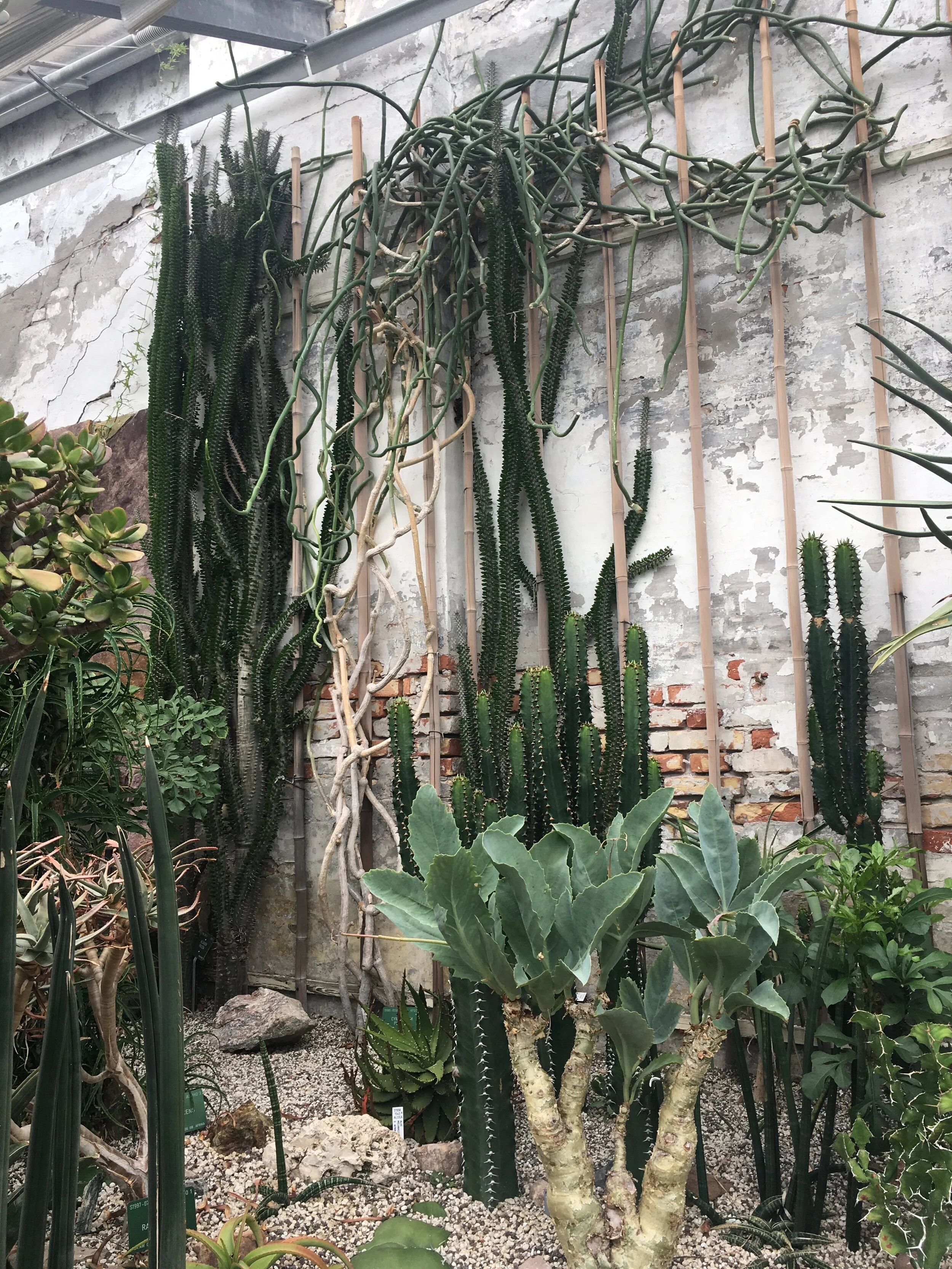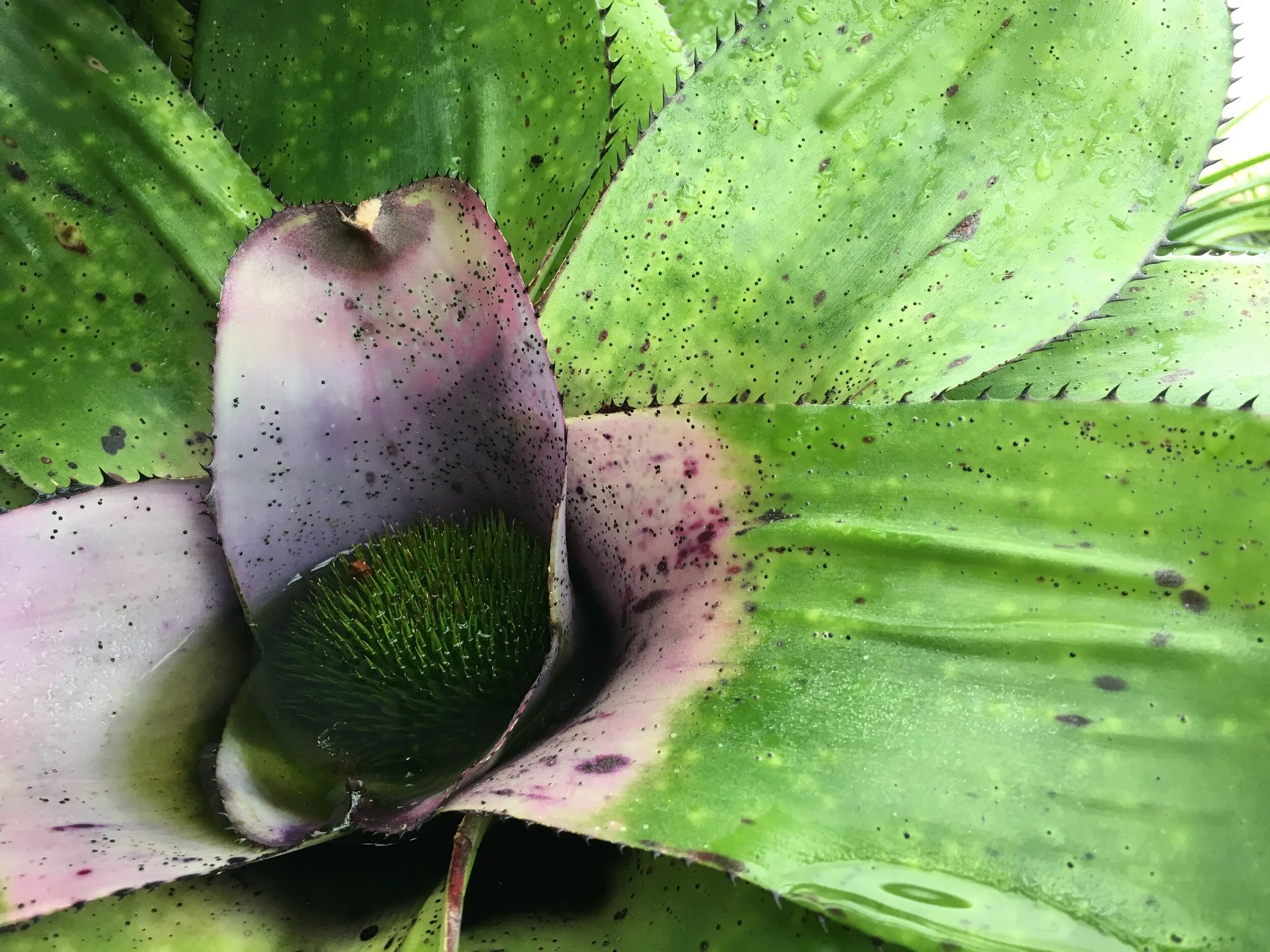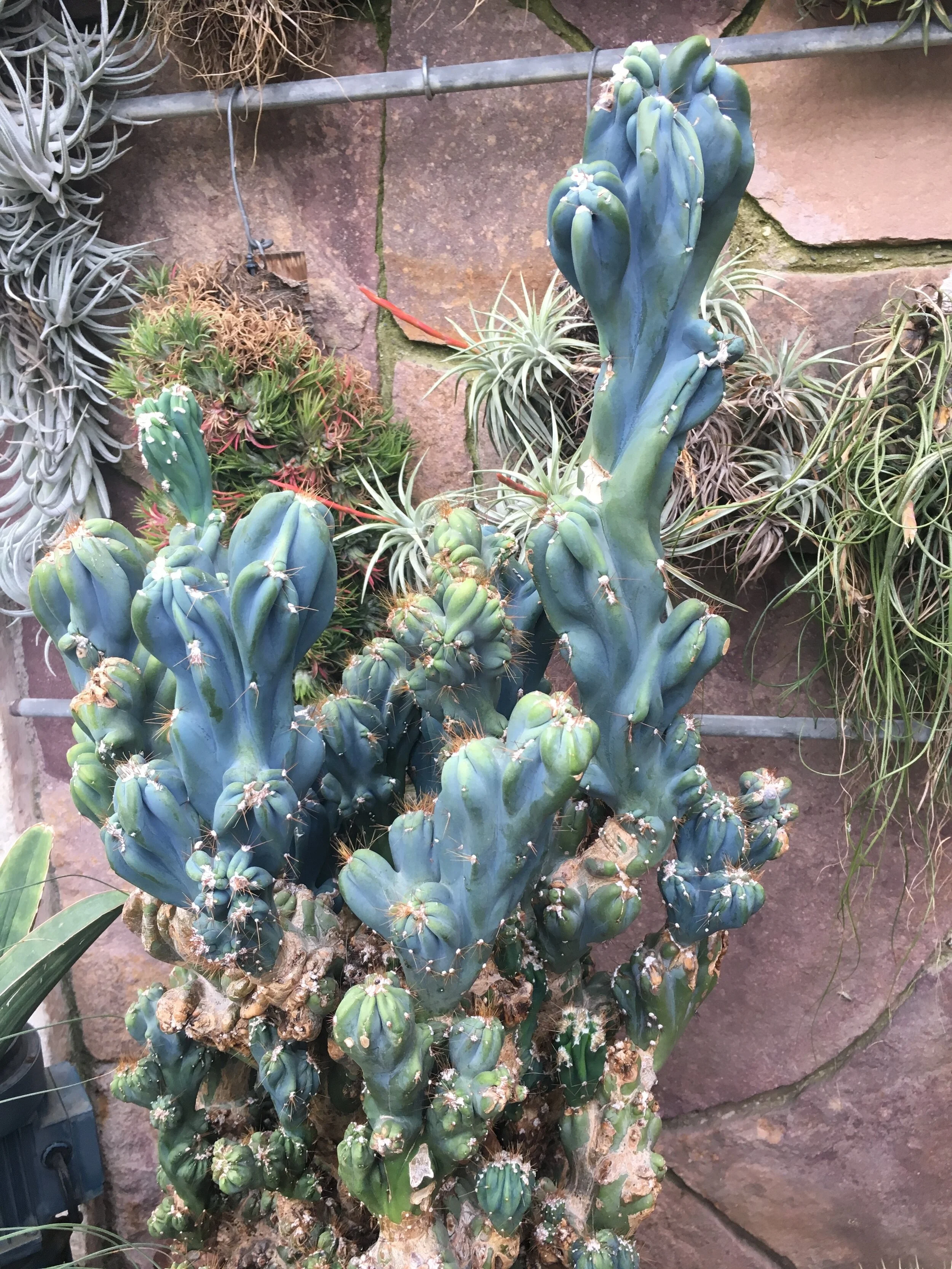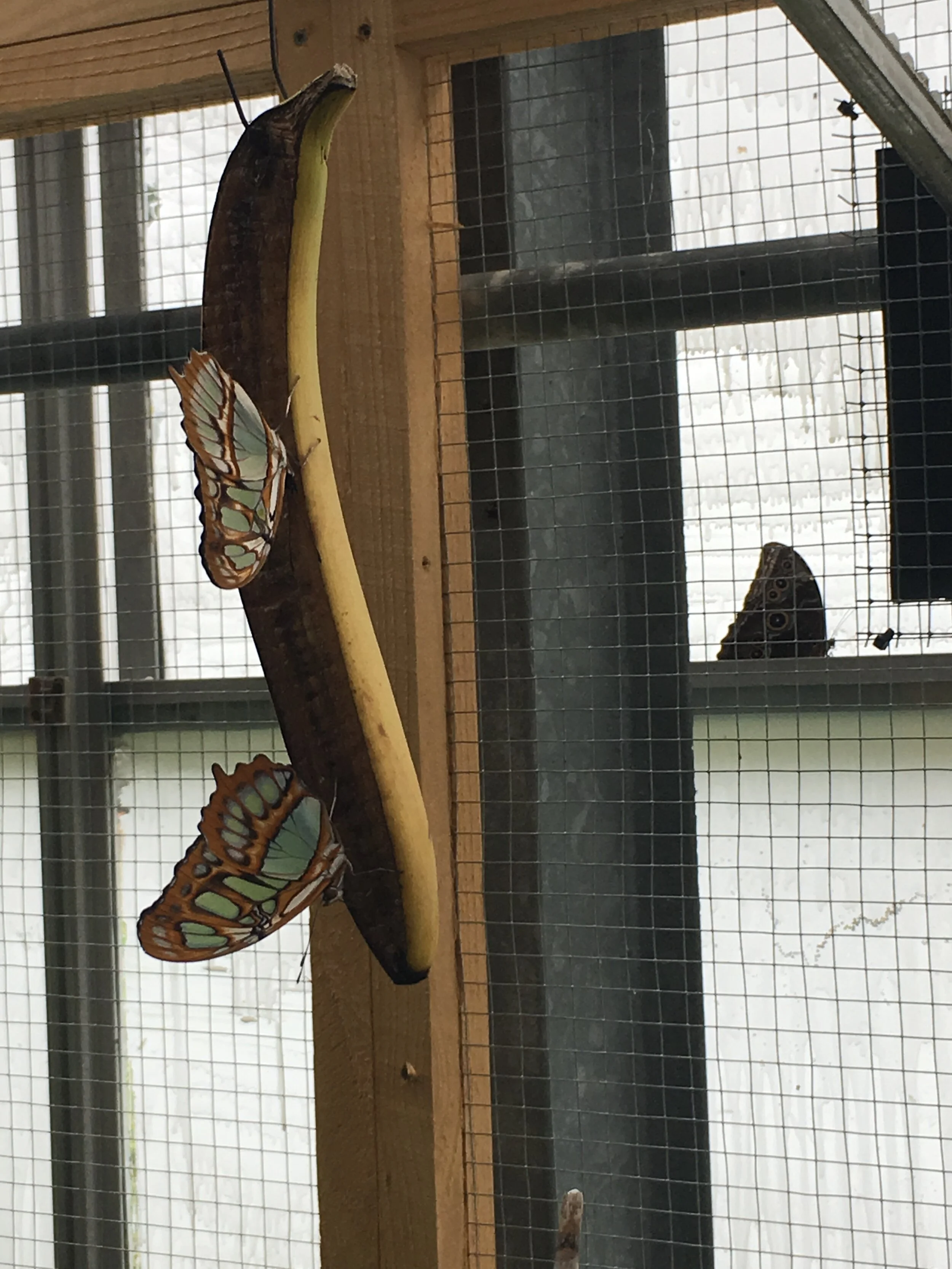Botanical Gardens Don’t Need to Be Dissociated
I stepped out of the coatless possibility of being drenched, into an intricate bursting heterotopia. A nowtopia, in the terms Fristad Christiania proposes… My being feasted on the multiplicity of forms, surfaces, and growth schemes. I pulled off my black hood, such that the dry warm air penetrated into my ears, and I devoted my attention to the first specimen.
I considered the option of experiencing the space in its totality, allowing the overlapping and converging of impressions to blend to a wild incoherent firework. Speeding through the narrow space at the pace of my contemporaries, but this seemed an alienating and anonymous coexistence in that moment. I longed truly to be with each organism personally, to engage with it as if saying “Hello, how are you?” and sitting down to listen to the answer; but also to trace its process analytically.
Our convergence, each plant and I, triggered visceral oscillations, vibrations, undulations as words whispered so quietly that I could only register them subconsciously. And the multiplicity of plants inspired a multiplicity in my being. If such curves can attain static stability, what other possibilities do we ignore in our society? If a cactus can manifest the dimensionality and immersion of a nebula, what else can too? This flora has been growing here at immense biodiversity in tight space for decades, and every species is flourishing. Specimens from the furthest corners of the world are nestled closely.


How can a gardener keep track of every species’ nutrient needs, light preferences, root network, and water requirements? And balance them dynamically with a hundred others and only inches of margin. N, P, K, Ca, S, Mg, C, O, and H are the most important macronutrients required by greenery and Fe, B, Cl, Mn, Zn, Cu, Mo, and Ni are their essential micronutrients. The reason that polyculture and intercropping (“Or at least crop rotation!”) are being advocated for in agriculture today, is that different plants fix different nutrients in the soil from the air. Either while they are alive or at their decomposition, these nutrients are made available in the soil. So, particular plants complement each other and support each other. Whereas monocropping, the status quo today in which a single crop is sowed in a field, leaches the soil of a crop’s most vital nutrients. Beyond this, the insects and microorganisms that plants attract or repel determine their level of success too, and intentional pairings promise significant optimization.
In the Botanisk Have of the Københavns Universitet, which it costs students six dollars to enter and other adults nine: cacti, mother-in-laws’ cushions, and welwitschia grow together in such variety that the arrangement may appear random. But there is no such chance. Some florae are delicately excavated and precariously migrated, as plaques delineate. And some organisms have been under individual attendance for centuries.
Though I did not touch them, I stuck my nose into the midst of this herbage. I walked slowly, to give my nervous system, respiratory, and endocrine system the chance to absorb the subtler, more gradual emanations of these creatures. My fine musculature relaxed, my movement flowed.
And this was all before the lepidoptera.
Stepping into the Butterfly House…det Sommerfugle Huset i Botanisk Have…brought me into a reverie. As much as I had opened myself to convergence and further, the lepidoptera invited me into their entrancing existence…I let myself go, into a thoughtless realm of incredulity and admiring. My feet felt no force, only space, under their soles. And I drifted in rhythmic papery beating, arterial geometry.


